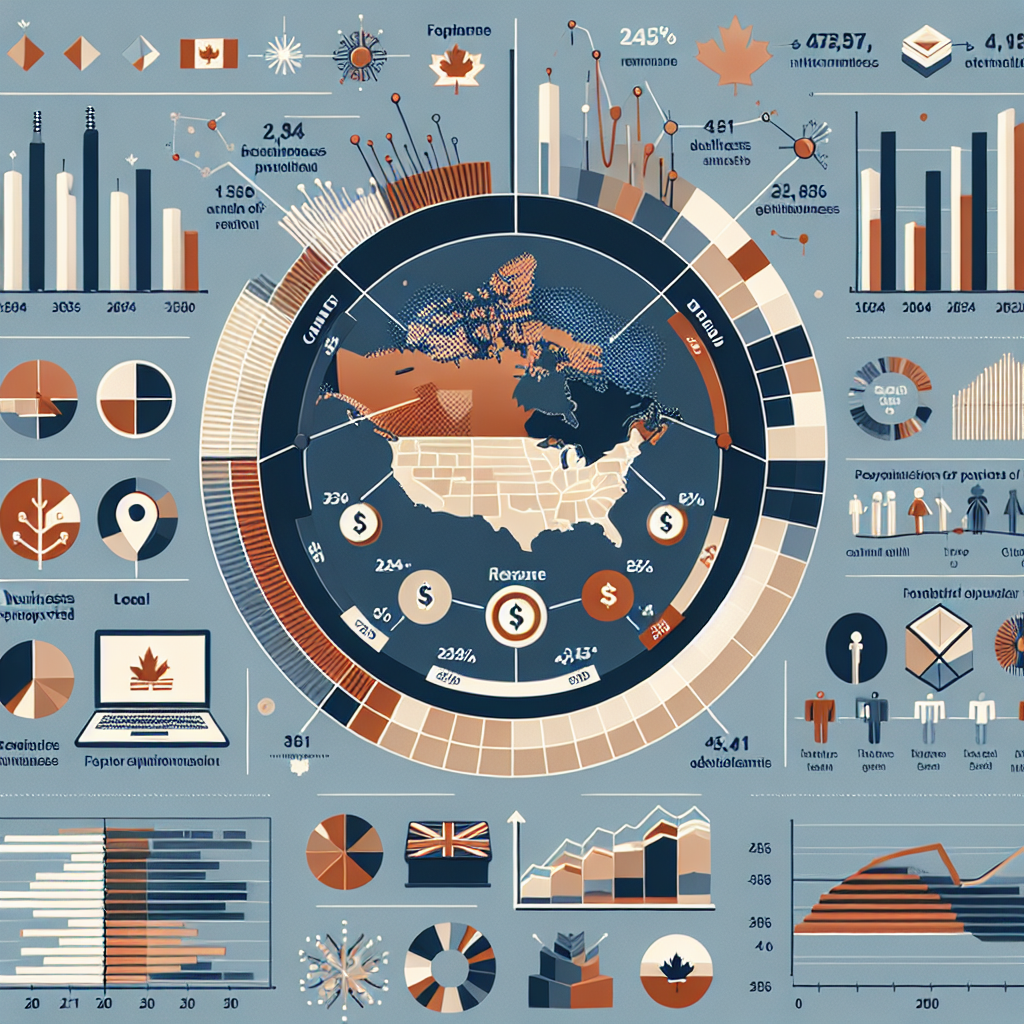In 2024, emerging trends in microfinance loans in Canada are reshaping the financial landscape, offering innovative solutions for individuals and businesses alike. As the demand for accessible funding rises, many Canadians grapple with the challenges of obtaining traditional loans. This struggle can lead to financial exclusion, hampering growth and opportunity. Yet, the evolution of microfinance offers a transformative avenue to bridge these gaps. This article delves into the key trends set to dominate the microfinance sector, empowering readers to make informed decisions in this rapidly changing environment.
Transformative Impacts of Technology on Microfinance in Canada
The integration of technology in microfinance is creating unprecedented opportunities for growth and accessibility in Canada. Digital platforms are increasingly allowing micro-lenders to evaluate creditworthiness in real time, utilizing alternative data points such as payment histories, social media activity, and e-commerce transactions. These innovative assessment methods help lenders reduce risk while expanding their reach to traditionally underserved populations. By harnessing the power of machine learning and data analytics, microfinance institutions can offer personalized products tailored to individual borrower needs.
Moreover, the rise of mobile banking is revolutionizing the way Canadians access microfinance loans. With the convenience of smartphones, borrowers can apply for loans from anywhere, anytime. This shift not only enhances accessibility but also streamlines the application process, reducing approval times significantly. Consequently, microfinance organizations are adopting agile methodologies to meet the increasing demand for instant financing solutions, ensuring that users can secure funds at a moment’s notice.
Security and transparency are also being fortified through technological advancements. Blockchain technology, for instance, is being explored for its potential to provide an immutable ledger of transactions, enhancing the trustworthiness of microfinance operations. As borrowers become more informed and tech-savvy, they expect greater transparency in the terms and conditions associated with loans. Adopting these technologies not only aligns with borrower expectations but also positions microfinance institutions as forward-thinking leaders in the financial sector.
Growing Demand for Sustainable and Ethical Loan Options
Consumer awareness around ethical and sustainable lending practices is on the rise, prompting a significant shift in the microfinance landscape in Canada. Individuals are increasingly seeking loan options that align with their values, prioritizing institutions that adopt environmentally and socially responsible practices. This trend is reshaping the criteria by which potential borrowers evaluate microfinance organizations, compelling lenders to embrace ethical frameworks in their operations.
As this demand intensifies, microfinance lenders are responding by developing products that support sustainable initiatives. Green loans, which provide financing for eco-friendly projects, and impact investment opportunities that fund social enterprises are becoming increasingly popular. These offerings not only meet the ethical considerations of borrowers but also contribute to a broader movement toward sustainable development goals within the financial sector.
Furthermore, this growing inclination toward sustainability is being echoed in the regulatory landscape, as Canadian policymakers advocate for increased transparency and accountability in lending practices. Institutions that prioritize ethical lending are likely to benefit from both customer loyalty and potential incentives from government programs aimed at promoting sustainability. Aligning microfinance offerings with sustainable practices positions lenders favorably in an evolving market—making them a compelling choice for socially conscious borrowers.
Regulatory Changes Shaping the Future of Microfinance Loans
The regulatory environment surrounding microfinance in Canada is undergoing pivotal changes that will significantly influence how loans are structured and distributed. In 2024, we can expect a continued push toward more stringent regulations aimed at protecting consumers. This involves ensuring that interest rates are fair and that lenders are held accountable for their practices. Regulatory bodies are focusing on fostering a more transparent lending environment, which is crucial for building trust with borrowers.
Additionally, the Canadian government’s initiatives aimed at financial inclusion are gaining momentum. Programs that support microfinance institutions are being launched to provide grants, funding, and resources for organizations serving underserved populations. These initiatives are designed not only to empower borrowers but also to create a more equitable financial system. As a result, microfinance players that align with these government efforts are likely to gain enhanced credibility and access to funding.
Moreover, regulatory changes will further encourage innovation within the microfinance sector. As the landscape becomes more competitive, organizations that leverage technology and ethical practices in compliance with regulations will emerge as industry leaders. In 2024, the interplay between regulation and innovation will dictate which microfinance institutions thrive, creating opportunities for borrowers to access better products and services tailored to their needs.
Innovative Strategies for Supporting Underserved Communities
Addressing the unique challenges of underserved communities requires innovative strategies that go beyond traditional lending models. In 2024, microfinance organizations are increasingly partnering with local community organizations to identify and address specific financial needs. These collaborations help establish a more profound understanding of the communities served, enabling tailored solutions that resonate with local dynamics. By embedding themselves within these communities, microfinance lenders can foster trust and provide support that aligns with cultural and socioeconomic realities.
Furthermore, microfinance institutions are embracing educational programs aimed at empowering borrowers through financial literacy. By offering workshops and resources on budgeting, credit management, and entrepreneurship, these organizations are equipping individuals with the knowledge necessary to make informed financial decisions. This not only enhances the borrowers’ ability to manage loans effectively but also nurtures a culture of financial independence that can lead to sustainable economic growth within communities.
Lastly, technology is playing a crucial role in connecting underserved populations with microfinance resources. Mobile applications and online platforms are being utilized to streamline communication, offering easy access to information about loan options and financial education. By leveraging these tools, microfinance organizations can reach more borrowers, improve engagement, and ultimately create a more inclusive financial environment for all Canadians.
The trends shaping microfinance loans in Canada for 2024 present exciting opportunities for individuals, businesses, and institutions alike. By embracing technology, prioritizing sustainability, navigating regulatory changes, and implementing innovative strategies for community support, the microfinance sector is on the brink of a transformative era. As you navigate these emerging trends, consider aligning your financial choices with providers that resonate with your values. Explore the myriad possibilities that microfinance has to offer, and take a step toward enhancing your financial future in a landscape ripe with potential.
Navigating Credit Report Corrections in Canada: 2024 GuideExploring 2024 Options for Canadian Credit Card Debt ConsolidationDebunking 2024 Myths About Canadian Credit ScoresRelevant LinkRelevant LinkRelevant LinkNavigating Credit Report Corrections in Canada: 2024 GuideExploring 2024 Options for Canadian Credit Card Debt ConsolidationDebunking 2024 Myths About Canadian Credit ScoresRelevant LinkRelevant LinkRelevant LinkNavigating Payday Loans in Canada: A Bad Credit DilemmaExploring Alberta’s Online Payday Loan Landscape: Risks and RealitiesNavigating the Payday Loan Landscape in Victoria, BCRelevant LinkRelevant LinkRelevant Link



